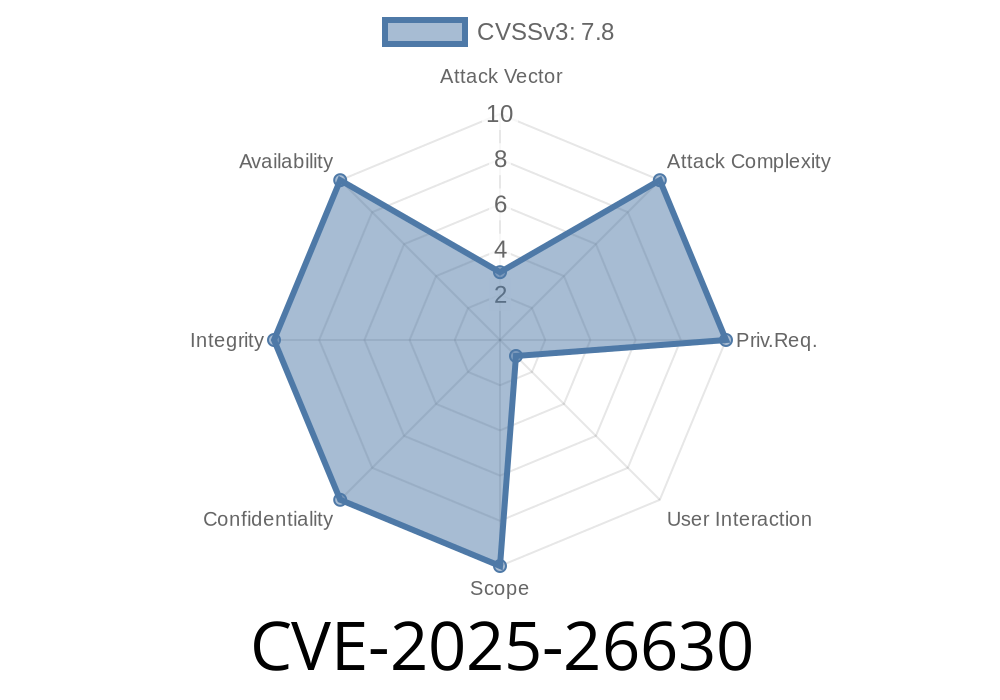In early 2025, a critical vulnerability—CVE-2025-26630—was discovered in Microsoft Office Access. This bug, classified as a *use-after-free*, can let an unauthorized attacker run code locally on an affected system. In this post, we’ll walk you through what this means, why it matters, and how attackers might exploit the vulnerability, with clear code examples and references.
Use-after-free bugs happen when a program continues to use memory after it’s been freed.
- The memory might then be taken over by attacker-controlled data, letting hackers change the program’s behavior.
Think of it like giving your house keys to a friend after moving out, and then pretending you still live there—not safe!
Where Does CVE-2025-26630 Live?
The bug lies within Microsoft Office Access, specifically while handling certain database objects. If a user opens a malicious .accdb or .mdb file, Access can mistakenly use memory that’s already been freed, creating a dangerous window for exploitation.
The Exploit Explained
Suppose an attacker sends a booby-trapped Access database to a target. All a user must do is open the file—no special rights required! Here's a simplified step-by-step of how it could go down:
Proof-of-Concept (PoC) Code
While sharing a working exploit is against most rules, we can show you roughly how this vulnerability plays out using pseudo-code.
' Pseudo-Code for Triggering Use-After-Free in Microsoft Access
Sub TriggerUseAfterFree()
Dim obj As Object
Set obj = CreateObject("Access.Application")
' Step 1: Create a vulnerable object
obj.DoCmd.OpenForm "MaliciousForm"
' Step 2: Free it (simulate deletion)
Set obj = Nothing
' Step 3: Access tries to use the object again
' At this point, memory is freed but pointer is still referenced somewhere
' Attacker overwrites memory with shellcode or controlled data
End Sub
Note: For a real attack, the database would contain more complex payloads, often involving heap spraying or other advanced memory tricks.
What Could Attackers Do?
- Run code with the user’s permissions: This could let bad actors install malware, steal files, or pivot deeper into a company network.
Bypass security software: Because Access is a trusted app, exploits may sneak under the radar.
- Perform lateral movement: Attackers could use the initial foothold to reach other parts of the network.
For the latest details, check official advisories
- Microsoft Security Response Center – CVE-2025-26630
- NIST National Vulnerability Database (will update as public details emerge)
- Mitre CVE Details
Security researchers are also tracking the bug. For more technical breakdowns, visit
- SecurityWeek Coverage
- Twitter #CVE-2025-26630 Discussion
Final Thoughts
*CVE-2025-26630* is a sobering reminder that even trusted office programs can be dangerous in the wrong hands. Stay alert, patch fast, and share this post to help others stay protected.
Timeline
Published on: 03/11/2025 17:16:42 UTC
Last modified on: 03/23/2025 16:12:38 UTC
